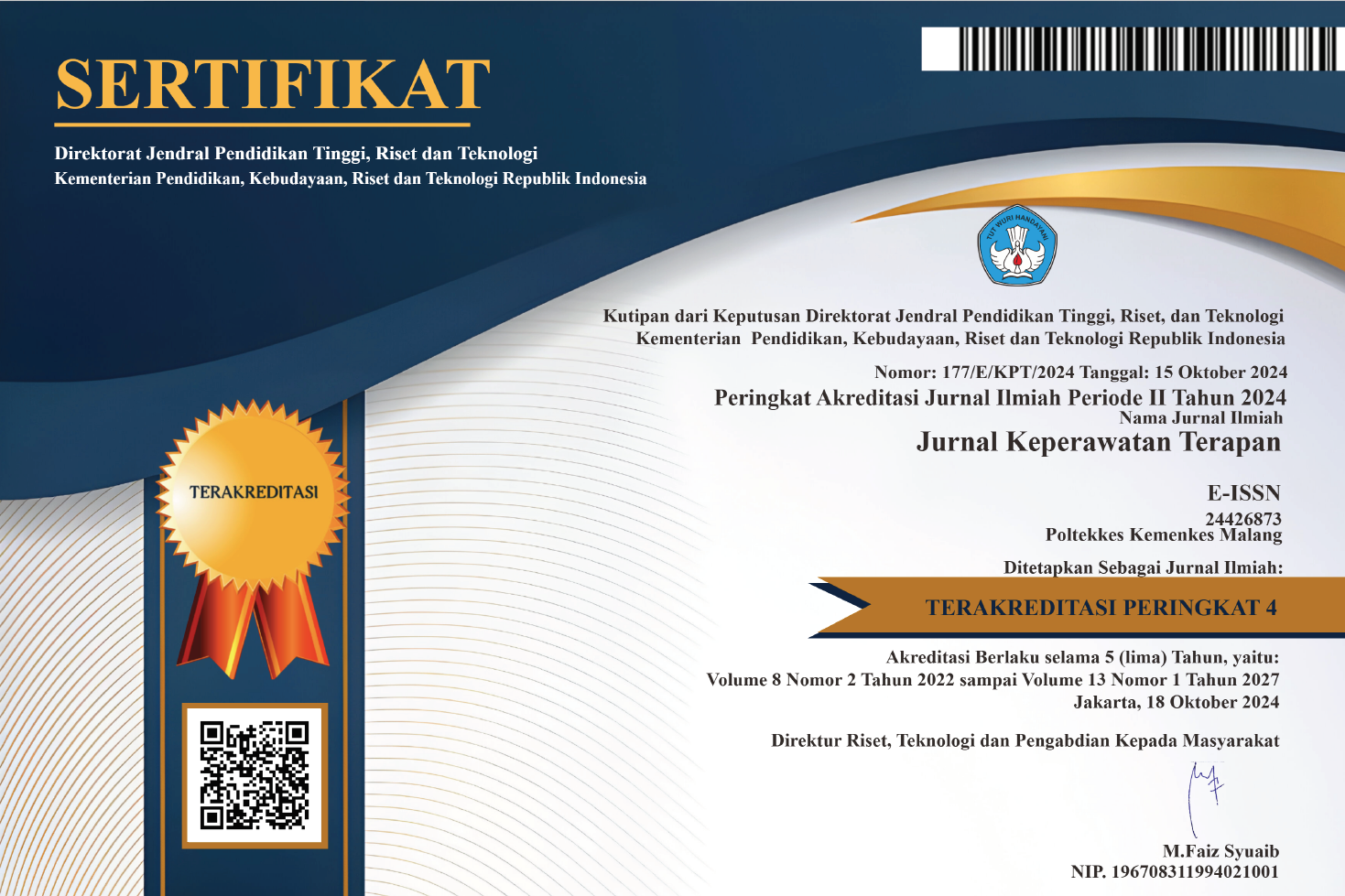The DIFFERENCE OF OBEDIENCE SURGICAL TEAM IN THE IMPLEMENTATION OF SURGICAL SAFETY BETWEEN ELECTIVE AND EMERGENCY SURGERY PATIENTS IN KARSA HUSADA HOSPITAL BATU
DOI:
https://doi.org/10.31290/jkt.v5i2.352Keywords:
Obedience, surgical team, surgical safety, elective, emergencyAbstract
Patient safety with surgery becomes the main focus in medical action, as it involves invasive procedure. The obidience of surgical team is very important to reduce the risk at the surgery procedure. At 2007, WHO has released a method for keep the patient safety in Surgical Safety Checklist (SSC) form, to reduce the mortality of patient. The purpose of this research is to know the difference of obidience of surgical team in implementation of surgical safety between elective and emergency surgical patient at operating room of Karsa Husada Hospital. The research design that used is comparative design with cross-sectional approach, with the amount of sample is 22 person and used the purposive sampling according to the both inclusion and exclusion criteria. The method of collecting data implemented by non-participative observation to the surgical team that conducting the operation each 15 times to both the elective dan emergency surgery patient. The research instrument that used was SSC observation form. The tabulating data that used was analytic comparative technic with Chi Square test. The results show the obidience of surgical team in surgical safety checklist implementation at elective surgical patient is 80% was scored obey, meanwhile at emergency surgical patient is only 7% was scored obey, and the significance score is 0,000, that means there is a difference of obidence of surgical team in the implementation of surgical safety between elective and emergency surgery patient. Keywords: Obedience, surgical team, surgical safety, elective, emergency
References
Asmadi. 2010. Pendekatan Kuantitatif dan Kualitatif serta kombinasinya dalam Penelitian Psikologi. Yogyakarta: Pustaka Pelajar.
Azwar, S. 2012. Sikap Manusia: Teori dan Pengukurannya. Yogyakarta: Liberty.
Brunner & Suddarth. 2010. Buku Ajar Keperawatan Medikal Bedah Edisi 8. Jakarta: 2010.
Hamlin, L., et al. 2016. Perioperative Nursing an Introduction 2nd Edition. Australia: Elsevier.
Haynes A.B., Weiser T.G., Berry W.R., Lipsitz S.R., 2009. Surgical Safety Checklist to Reduce Morbidity and Mortality in a Global Population. The New England Journal of Medicine , 360:(5) 491-499.
Hidayat, Alimul A. 2009. Pengantar Kebutuhan Dasar Manusia. Jakarta: Salemba Medika.
HIPKABI. 2012. Buku Pelatihan Dasar-Dasar Praktik Klinik Kamar Bedah. Jakarta: HIPKABI Pers.
Majid A., Yudha, M., Istianah, U. 2011. Keperawatan Perioperatif. Yogyakarta: Goysen Publishing.
Marihot Simamora. 2016. Ngeri, Pasien RSUD Pandan Ini Meninggal dengan Belahan Operasi Sepanjang 50 cm (http://suaratapanuli.com/3234/ngeri-pasien-rsud-pandan-ini-meninggal-dengan-belahan-operasi-sepanjang-50-cm/, diakses pada 18 September 2017).
Muttaqin, Arif & Sari, Kumala. 2013. Asuhan Keperawatan Perioperatif : Konsep, Proses, dan Aplikasi. Jakarta: Salemba Medika.
Potter & Perry. 2006. Buku Ajar Fundamental Keperawatan: Konsep, Proses, dan Praktik Volume 2 Edisi 4. Jakarta: EGC.
Sandrawati, Juliana dkk. 2013. Rekomendasi untuk Meningkatkan Kepatuhan Penerapan Surgical Safety Checklist di Kamar Bedah. Buletin Penelitian Sistem Kesehatan Vol. 17 No. 1 (Jurnal Online).
Setiadi. 2007. Perilaku Perawat Profesional terhadap Suatu Anjuran, Prosedur, atau Peraturan yang Harus Dilakukan atau Ditaati. Yogyakarta: Graha Ilmu.
Sugiyono. 2010. Statistika Untuk Penelitian. Bandung: Alfabeta.
Wawan, A dan Dewi M. 2010. Teori dan Pengukuran Pengetahuan, Sikap, dan Perilaku Manusia. Yogyakarta: Nuha Medika
Winona, H. 2012. Our Surgical Team (Online), (https://www.winona health.org/health-care-providers-and-services/surgical-services-team/, diakses pada 16 September 2017).
World Health Organization. 2009. Implementation Manual WHO Surgical Safety Checklist: Safe Surgery Saves Lives (Online). Geneva: World Health Organization.
World Health Organization, 2009. WHO Guidelines for Safe Surgery : Safe Surgery Saves Lives. Geneva: WHO.












